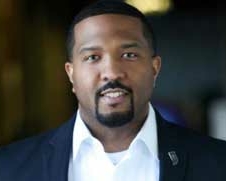Problem
The Central Wasatch Mountains are “ground zero” for millions of Utah residents and visitors alike to obtain clean drinking water, experience a variety of outdoor recreational activities, and, for some, to earn a paycheck. It’s a checkerboard of land management jurisdictions, including the U.S. Forest Service, the Salt Lake City and Metropolitan Water Districts, private property owners, the ski, lodging and restaurant businesses, the Utah Department of Transportation and Salt Lake County. As growth has accelerated along both the Wasatch Front and Wasatch Back, population pressures on the watershed and natural environment have increased. Over the past few decades, more than 80 studies have partially examined the Wasatch but until now, no effort has built a comprehensive plan that seeks to balance the many competing uses and systems.
Solution
Mayor Ben McAdams helped lead the Mountain Accord initiative, an effort to bring as many stakeholders together as possible to collect and review data and gather public comment on four main areas: environment, recreation, economy and transportation and to see if consensus could be achieved to move forward from a blueprint to an approved environmental impact statement. The result was a set of agreed-to actions to influence local, regional and statewide planning and to initiate efforts to enact meaningful protections for the Central Wasatch in the face of growing pressures on this iconic and cherished landscape. Mountain Accord was a grassroots, bottom up, data driven activity that had to be supported by all of its signatories, including elected officials, private property owners, the ski industry, the environmental community, the transportation authority and others.


 https://newdealleaders.org/wp-content/uploads/2025/05/Leaders.jpg
1440
2560
Rachel Walsh
http://newdealleaders.org/wp-content/uploads/2019/11/logo-tnd.png
Rachel Walsh2025-05-07 21:02:352025-05-09 21:04:35Annual NewDEAL Forum Ideas Summit in Atlanta
https://newdealleaders.org/wp-content/uploads/2025/05/Leaders.jpg
1440
2560
Rachel Walsh
http://newdealleaders.org/wp-content/uploads/2019/11/logo-tnd.png
Rachel Walsh2025-05-07 21:02:352025-05-09 21:04:35Annual NewDEAL Forum Ideas Summit in Atlanta






